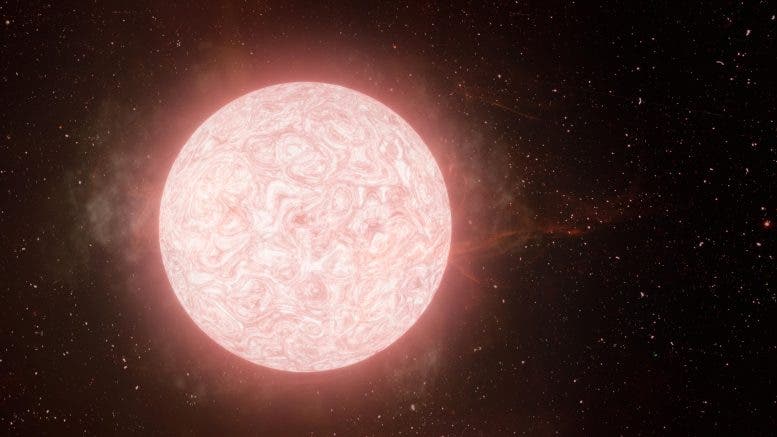
For more than 130 days astronomers had been monitoring a dying red supergiant located more than 120 million light-years from Earth. They hoped to catch the doomed star in the process of collapsing into a supernova — the biggest type of explosion in the universe — and the faint of most such massive stars at the end of their lifecycle. That’s exactly what happened, much to everyone’s delight as science is now much richer after astronomers learned new things that occur in the moments leading to the great kaboom.
Using two Hawaiian telescopes – the University of Hawaiʻi Institute for Astronomy Pan-STARRS on Haleakalā, Maui and W. M. Keck Observatory on Mauna Kea, Hawaii Island – astronomers first detected the doomed star, known as SN 2020tlf, in 2020 after they were tipped off by a huge amount of light radiating from the cosmic object. Just a few months later, the star lit up the sky when it went supernova. This was the first time that scientists observed this phenomenon in real-time.
“It’s like watching a ticking time bomb. We’ve never confirmed such violent activity in a dying red supergiant star where we see it produce such a luminous emission, then collapse and combust, until now,” says senior author Raffaella Margutti, an associate professor of astronomy at UC Berkeley.
The distant SN 2020tlf belongs to the red supergiant class, which represents the largest stars in the universe whose volume can exceed a thousand times the radius of the sun. Unlike main-sequence stars like the sun, which mainly convert hydrogen into helium via nuclear fusion, red giants can fuse heavier elements like carbon due to their cores becoming hotter and more pressurized as they run out of fuel. Red giants have a low surface temperature hovering around 4,100 degrees Kelvin — that’s very cool for a star and makes them shine with a red color, hence the name.

At the very end of its lifetime, a red supergiant will fuse increasingly heavier elements until the star contains a core of iron. At this point, fusion stops and the star collapses under its own gravity. At this moment, the stars generate a Type II supernova explosion that can outshine entire galaxies.
Every year, astronomers detect dozens of supernovae across the sky but only in the aftermath. Until now, they’ve never seen the entire process play out in real-time, which is why SN 2020tlf is such a spectacular find.
Writing in The Astrophysical Journal, the scientists reported a never-before-seen phenomenon. In the days leading up to the supernova, SN 2020tlf erupted in bright flashes of light generated by giant spires of hot gas. They also observed a dense cloud of gas surrounding the star at the time of its explosion, likely the same kind of material violently ejected in the prior months.
These findings suggest that red supergiants likely undergo significant changes to their internal structure before they collapse. More evidence of this behavior is needed before scientists draw any further conclusions, which is why surveys like the Young Supernova Experiment (YSE), which led to the discovery of SN 2020tlf, will be ramped up.
“I am most excited by all of the new ‘unknowns’ that have been unlocked by this discovery,” says Wynn Jacobson-Galán, an NSF Graduate Research Fellow at UC Berkeley and lead author of the study. “Detecting more events like SN 2020tlf will dramatically impact how we define the final months of stellar evolution, uniting observers and theorists in the quest to solve the mystery on how massive stars spend the final moments of their lives.”






